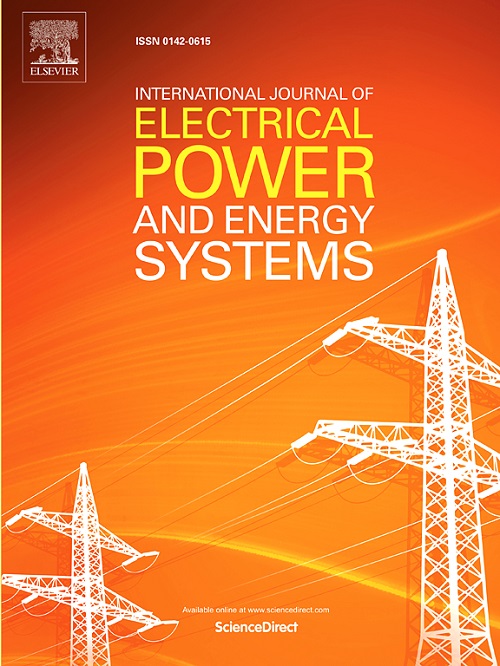基于改进1D-YOLO和多任务学习的电能质量扰动类型识别和参数辨识
IF 5
2区 工程技术
Q1 ENGINEERING, ELECTRICAL & ELECTRONIC
International Journal of Electrical Power & Energy Systems
Pub Date : 2025-04-15
DOI:10.1016/j.ijepes.2025.110681
引用次数: 0
摘要
电能质量扰动的准确识别和参数辨识是有效管理电能质量扰动的关键。本研究提出了一个基于改进的一维You Only Look Once (1D-YOLO)框架的模型,将多任务学习结合起来,统一了类型识别、时间定位和特征参数识别三个任务。该模型利用路径聚合网络(PANet)进行高级多尺度特征融合,而解耦的头部可以同时分析10个PQD元素。实例研究结果表明,该模型在元素级和信号级识别任务中的平均精度和分类精度均超过99.5%。此外,它精确地识别开始-结束时间以及关键参数,多任务学习进一步提高了单个任务的性能。本文章由计算机程序翻译,如有差异,请以英文原文为准。
Type recognition and parameter identification of power quality disturbances using improved 1D-YOLO and multi-task learning
Accurate recognition and parameter identification of Power Quality Disturbances (PQDs) are crucial for effective disturbance management. This research presents a model built on an improved One-Dimensional You Only Look Once (1D-YOLO) framework, incorporating multi-task learning to unify three tasks: type recognition, time localization, and characteristic parameter identification. The proposed model utilizes a Path Aggregation Network (PANet) for advanced multi-scale feature fusion, while decoupled heads enable concurrent analysis of 10 PQD elements. The case study results indicate that the model achieves over 99.5% mean average precision and classification accuracy for both element-level and signal-level recognition tasks. Additionally, it precisely identifies starting-ending times, as well as key parameters, with multi-task learning further enhancing the performance of individual tasks.
求助全文
通过发布文献求助,成功后即可免费获取论文全文。
去求助
来源期刊
CiteScore
12.10
自引率
17.30%
发文量
1022
审稿时长
51 days
期刊介绍:
The journal covers theoretical developments in electrical power and energy systems and their applications. The coverage embraces: generation and network planning; reliability; long and short term operation; expert systems; neural networks; object oriented systems; system control centres; database and information systems; stock and parameter estimation; system security and adequacy; network theory, modelling and computation; small and large system dynamics; dynamic model identification; on-line control including load and switching control; protection; distribution systems; energy economics; impact of non-conventional systems; and man-machine interfaces.
As well as original research papers, the journal publishes short contributions, book reviews and conference reports. All papers are peer-reviewed by at least two referees.

 求助内容:
求助内容: 应助结果提醒方式:
应助结果提醒方式:


